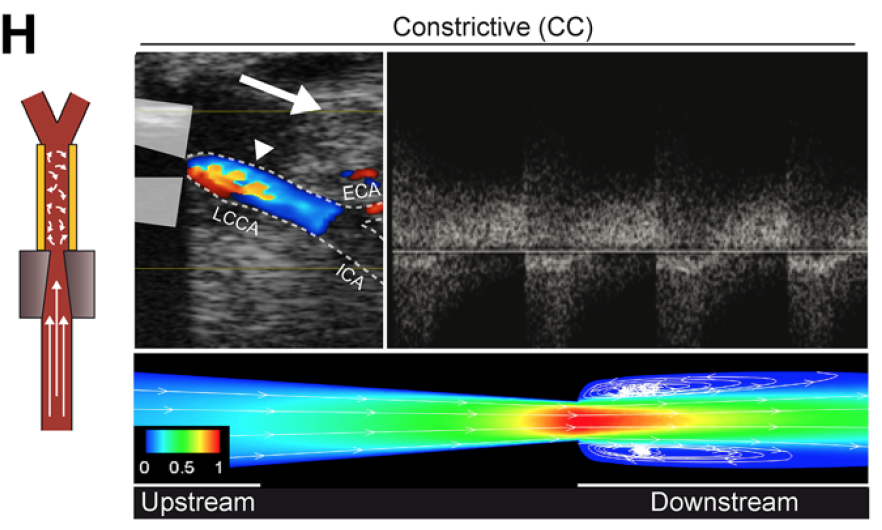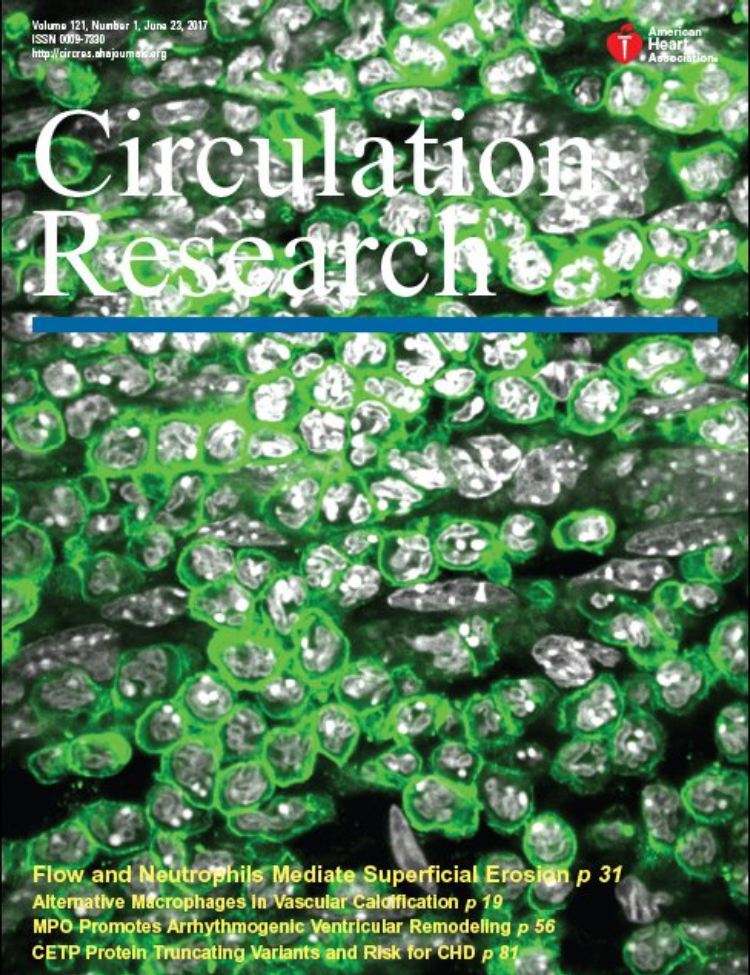Flow Perturbation Mediates Neutrophil Recruitment and Potentiates Endothelial Injury via TLR2 in Mice – Implications for Superficial Erosion
Franck G, Mawson T, Sausen G, Salinas M, Santos Masson G, Cole AP, Beltrami Moreira M, Chatzizisis Y, Quillard T, Tesmenitsky Y, Shvartz E, Sukhova GK, Swirski FK, Nahrendorf M, Aikawa E, Croce K, Libby P
 Rationale: Superficial erosion currently causes up to a third of acute coronary syndromes (ACS), yet we lack understanding of its mechanisms. Thrombi due to superficial intimal erosion characteristically complicate matrix-rich atheromata in regions of flow perturbation.
Rationale: Superficial erosion currently causes up to a third of acute coronary syndromes (ACS), yet we lack understanding of its mechanisms. Thrombi due to superficial intimal erosion characteristically complicate matrix-rich atheromata in regions of flow perturbation.
Objective: This study tested in vivo the involvement of disturbed flow, and of neutrophils, hyaluronan, and TLR2 ligation in superficial intimal injury, a process implicated in superficial erosion.
Methods and Results: In mouse carotid arteries with established intimal lesions tailored to resemble the substrate of human eroded plaques, acute flow perturbation promoted downstream endothelial cell (EC) activation, neutrophil accumulation, EC death and desquamation, and mural thrombosis. Neutrophil loss-of-function limited these findings. TLR2 agonism activated luminal ECs, and deficiency of this innate immune receptor decreased intimal neutrophil adherence in regions of local flow disturbance, reducing EC injury and local thrombosis (p<0.05).
Conclusions: These results implicate flow disturbance, neutrophils, and TLR2 signaling as mechanisms that contribute to superficial erosion, a cause of ACS of likely growing importance in the statin era.

